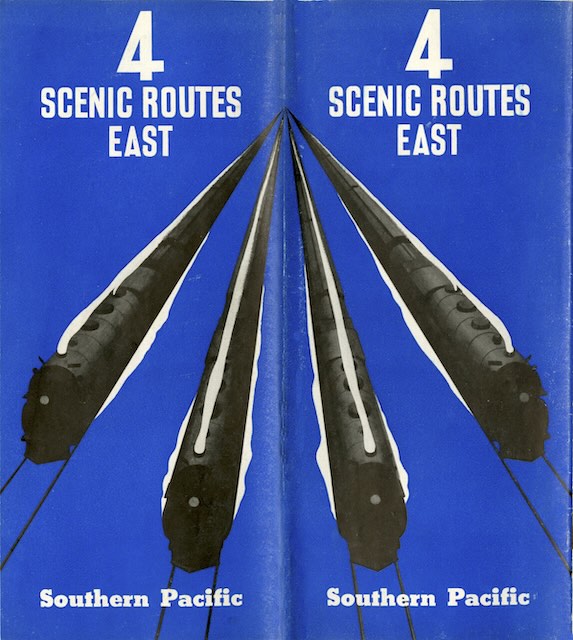In 1926, K. C. Ingram, a former newspaper writer turned Southern Pacific employee — he eventually rose to be assistant to the president — proposed that the railroad needed a unifying theme in its advertising. He argued that SP advertising at the time was “disjointed” and a centralized theme would give the public something to identify with, like a brand logo.
 Click image to download an 11.0-MB PDF of this 24-page booklet.
Click image to download an 11.0-MB PDF of this 24-page booklet.
This persuaded the company to develop its “four routes” campaign in 1927. This was based on the notion that the railroad offered four different ways into and out of California so passengers could go one way and return on another for little or no extra cost. This 1937 booklet was aimed at Californians who might want to take one route to, say, Chicago and another route back.
I’m a bit skeptical about the no-extra-cost claim as none of the four routes had the same endpoints. Taking a roundtrip on two different routes between California and Chicago would necessitate an additional leg, either New Orleans-Chicago, Los Angeles-Oakland, or Oakland-Portland. I would be surprised if SP offered that leg for free, especially since the New Orleans-Chicago one wasn’t even run by the Southern Pacific, and Pullman almost certainly would not give people a free night in one of its berths.
The booklet includes five pages on the Sunset Route, four on the Golden State Route, three on the Overland Route, and two each on the Shasta and West Coast of Mexico routes (which was included even if it wasn’t one of the “four routes”). These are accompanied by numerous photos, many of which show trains. It appears someone tried to get artistic because many of the train photos show just a locomotive silhouette or part of a locomotive. Another five pages show the kind of accommodations people would get in Pullman, tourist, or coach classes.
Southern Pacific would continue to use the four routes slogan for at least another decade. While it might have been a unifying theme, it could also have been stultifying after so many years, leading people with more creative ideas to work for someone else.
